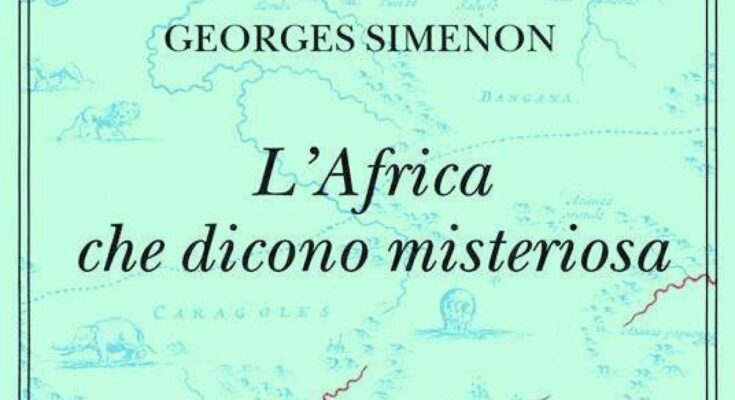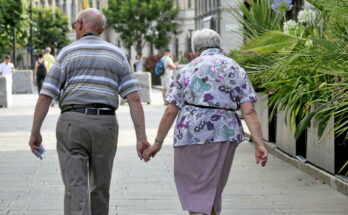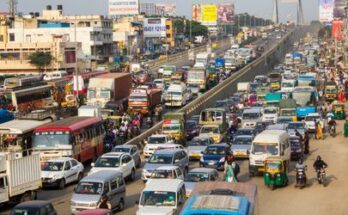“Africa speaks to you” said an advertising campaign at the time. The Vincennes and Dakar-Djibouti Colonial Expositions had just taken place, and France viewed its overseas territories with pride and paternalistic consideration. In the early 1930s, Georges Simenon went to listen to what the Dark Continent had to say. He returned with reports in several installments for the weekly magazine Voilà, now collected in a book, the Africa they say is mysterious (Adelphi, 220 pages, 16 euros; translation Francesca Scala and Maria Laura Vanorio, with notes by Ena Marchi) and enough material for several novels: Colpo di luna, to name the best. He also returned with seven hundred and fifty photographs, 50 of which a selection accompanied the Adelphian volume. He summarized the gist of his conversation as follows: «Do you believe that Africa is speaking to you, do you believe that Africa is calling you, that black men and women are extending their hands to you and the nature of its fruits? Africa? Believe me, Africa tells you bad things. And that’s good.” The description of the journey from Sudan to the Belgian Congo, down a 1,700-kilometer river to Kinshasa and then, by boat, from Gabon to Senegal, illustrates the concept: the gray and gelatinous light, nature that swallows everything, the bodies of humanity glistening with sweat, the lack of color communication between the whites who dominate and are defeated before even starting, and the blacks who let them live as if each day is ready to die. In 1932 “one black for every sleeping person, one white per kilometers” is the cost of progress that Africa must pay today.
Between 1932 and 1935 Simenon apprenticed all over the world. He wants to know him, he wants to see “the naked man for what he is, his difference compared to the public.” Africa that wants to be mysterious opens with a report, «Human cargo», which is not part of the article written for Voilà, but is in many ways a prelude, by sea, the Mediterranean and then the Black Sea, of what will be his journey in Eastern Europe and the Soviet Union, which he will enter via the Caucasus. First on the cargo ship carrying the cargo
emigrants for political reasons, regime change, national question, ethnic cleansing, because of hunger, loss of job, loss of home, land, starvation, then by train, by car on foot in the cities and villages of Eastern Europe. Simenon breathes the aroma of fear and lies, hidden displays of power and misery, bureaucratic stupidity and contempt for the human person, pure and simple doctrinal fanaticism and pure and simple survival techniques. “Everyone is lying. Everyone is hiding something. Everyone is spying.” If in Eastern Europe he went to meet the “starving people”, in the Soviet Union Simenon found himself faced with a people who turned their hunger into a political weapon, sublimating it into ideology, refining it into an instrument of national restoration. «We are the most powerful country in the world. We hold eighty percent of the world’s platinum production. Our fleet is the fourth, we have oil, cotton. A few more years and we will be ready…”. Romania, Bulgaria, Poland expressed to him a mountain of hatred, expectations, poverty, and in their own way Eastern Europe also “tells you nothing”, but with envy. Russia does it with hatred and will not limit itself to words alone.
The trip to the Soviet Union occurred before André Gide wrote his Retour de l’Urss and Céline wrote her Mea culpa. The one in Africa, after Gide wrote Voyage au Congo and Céline wrote Voyage au bout de la nuit. It is also possible, as Ena Marchi observes in her always timely afterword, that Simenon read Conrad’s Heart of Darkness, released in France many years earlier, in 1925 to be precise, and what is more, the familiar Gide was for the Anglo-Polish writer the passport to his success on this side of the Channel, just as it was, for Simenon himself, the guarantor that he was a talented novelist and not a writer from a railway newsstand. If to these names we add that of Albert Londres, the most famous “big reporter” of that time, we understand how Simenon found himself in a plowed field and even more so by writers who had more in common with him, in terms of vision of the world and life, than we usually admit.
To highlight the differences, the first thing he did was choose a less traveled route. Instead of leaving in Bordeaux and after three weeks of sailing across Central Africa from west to east, he chose Marseille as his port of departure, disembarked in Cairo, arrived in Aswan and from there, after flying over Sudan, he followed the itinerary we talked about earlier.
As it happened
The Soviet Union, this choice represents his “desire to see the other side”, what really lies behind it, what is hidden behind the mirror, be it communist ideology, African tourist-colonial ideology…
Written in the casual, pamphlet manner of someone who is there to tell the story, but who doesn’t let up on making his point, the Africa they say is mysterious is actually a catalog of horrors, a “monstrous continent” that devours everything in its path, man and beast, climate and vegetation. If black people “survive”, or rather, they make “little effort not to die”, it is because they do nothing to change the absurdity that surrounds them, they are used to it and “they know how to look at death and they know how to die building narrow-gauge railroads or leprosy, the disease of sleeping between the jaws of a crocodile or a leopard”. What about white people? “On the contrary, white people fought, desperately fought for their lives and what they got from this was that sometimes they were overcome by excessive madness. This was called a bamboo coup, and whoever fell victim was sent back to the village, where he ended his life.”
As he said years later, Simenon did not realize he was an anti-colonialist after seeing Africa. This always happens, as a form of anger towards harassment and humiliation of humans, whatever their skin color. Yet it is also true, as the Africa they call mysterious makes so vividly clear, that for Simenon the black man remains unknown, something completely natural or unreasonable, seen rather as a reflection of another absurdity, namely the white and colonial absurdity in which the provincial Frenchman seeking the “great adventure” arrives to bring civilization and remains swallowed up by the ugliness of the universe that opens before him. Promiscuity, alcohol, illness, frustration, and unmotivated use of violence are the causes of the rest.
For some, the “African disease” would be like “progressive drunkenness,” which is another way to end up being swallowed up, or destroyed. Others, many others, would return, like the protagonist Colpo di luna, who says deliriously, on the ship taking them back to their homeland, that “Africa does not exist”.



